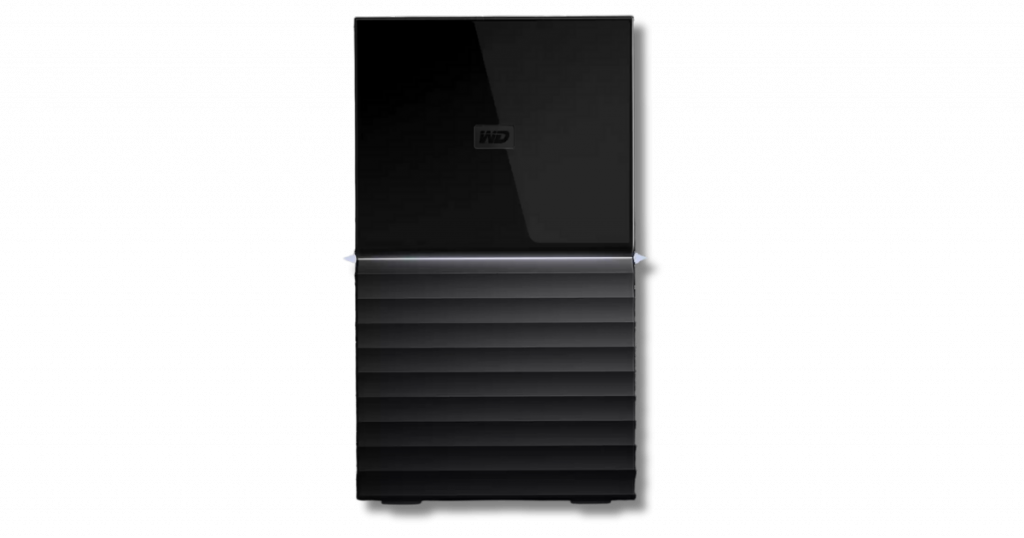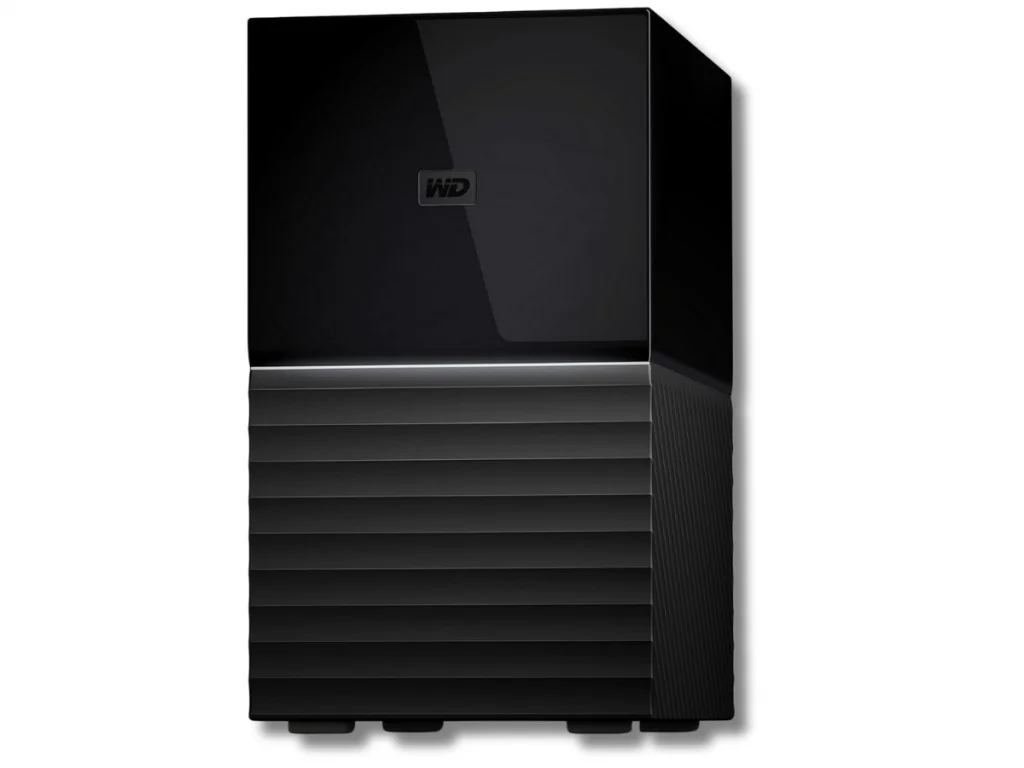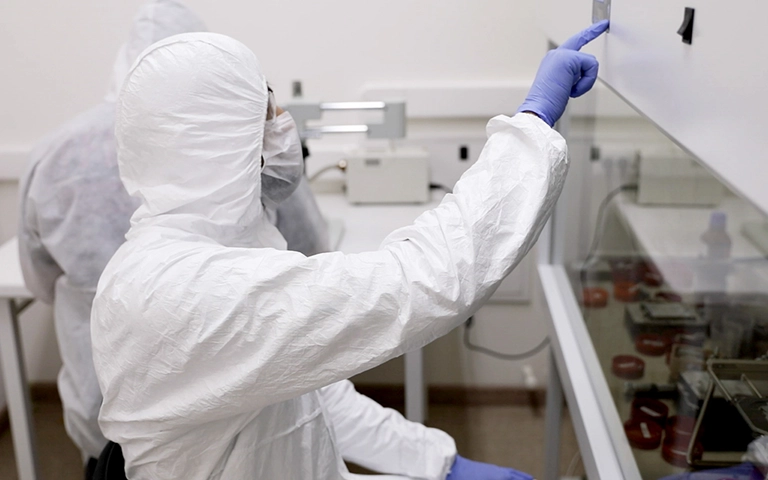Case Overview
A medical product supplier in Florida faced a critical data emergency when their WD My Duo RAID 0 8TB system suddenly failed. The device stored thousands of essential customer records and operational files used in daily business activities.
When the failure occurred, the supplier lost access to all data, causing a complete disruption to their internal operations.
The issue appeared without warning. Both drives in the RAID 0 array became unreadable at the same time. Because RAID 0 prioritizes speed over redundancy, even one drive failure can result in complete data loss.
In this case, the simultaneous malfunction of both drives made recovery more complex and required professional expertise.
Understanding the risk of permanent data loss, the client contacted RAID Recovery Services to ensure the recovery process would be handled safely and effectively by certified engineers.

Initial Symptoms and User Attempts
The failure began when the client noticed their WD My Duo device was no longer recognized by the connected computer. The indicator light remained on, but the storage volume did not appear in File Explorer.
Both drives made normal spin-up sounds, which initially suggested that the issue might be software-related rather than a complete hardware failure.
Concerned about the situation, the client followed several troubleshooting steps found on the Western Digital support website.
These included checking USB connections, updating firmware, and attempting to rebuild the array using the WD Drive Utilities tool. Despite their efforts, the system remained inaccessible, and the drives continued to appear as uninitialized.
Repeated attempts to repair or rebuild the drives only increased the risk of overwriting valuable data. This experience reflected one of the common NAS data loss causes seen when users try to resolve complex RAID failures without professional support.
Decision to Contact RAID Recovery Services
After failed DIY attempts, the client recognized the risk of further damage and researched RAID 0 specialists. Few providers had expertise with WD My Duo devices, so they chose RAID Recovery Services for confidentiality and technical proficiency.
During the consultation, our team reviewed failure symptoms and past recovery efforts, then outlined a recovery plan. To streamline logistics, we provided a prepaid shipping label. Once the device arrived, our engineers began diagnostics to determine the cause and recovery potential.
Diagnostic Findings
Once the device arrived at our recovery lab, our engineers began a full hardware and logical analysis of the WD My Duo RAID 0 system. The inspection confirmed that both drives were physically functional, with no signs of mechanical damage or head failure.
However, the logical structure of the array was heavily corrupted, preventing the system from being recognized by the host computer.
Our team identified several contributing factors during the evaluation:
Corrupted RAID metadata, which disrupted the array configuration
Bad sectors across both drives, affecting key data blocks
Damaged partition tables that made the volume unmountable
The My Duo was configured in RAID 0, a setup known for high performance but no fault tolerance. This meant that the loss or corruption of data on one drive immediately compromised the entire array. Learn more about the structure and limitations of RAID 0 configurations.
These conditions matched several common reasons for RAID data loss, including logical corruption and synchronization failure during write operations.

Recovery Procedure
After confirming the logical corruption, our engineers began a controlled recovery process designed to protect data integrity at every step.
The first stage involved creating sector-by-sector images of both drives using specialized hardware imagers. This ensured that no additional wear or data degradation would occur during recovery.
Once the imaging was complete, our team analyzed the RAID configuration parameters, including stripe size, drive order, and starting offset.
Using these details, we manually reconstructed the RAID 0 array in a secure virtual environment. This allowed us to rebuild the original data structure without modifying the client’s source drives.
Next, we used advanced data extraction utilities to retrieve file fragments and directories from the reconstructed array. Every recovered file was verified for consistency and cross-checked against logical references to ensure accuracy.
Attempting to rebuild a RAID array without this controlled process can easily result in overwriting valid data. For more insight, see our guide on how to repair degraded RAID arrays safely.

Verification and Results
After the extraction process, all recovered files were organized and validated through multiple verification stages. Our engineers compared the restored data with the client’s known directory structure to confirm completeness and integrity.
During this process, no major file corruption or data gaps were detected, indicating a fully successful recovery.
The final dataset included essential customer records, financial reports, and internal documentation critical to the client’s business operations.
Once validation was complete, the recovered data was securely transferred to an encrypted external drive and prepared for return shipment.
Within a few days, the Florida supplier received the recovered data and verified that all files were accessible and functional. The successful outcome allowed them to resume operations immediately, minimizing downtime and restoring confidence in their data continuity.
Fast turnaround times for business-critical data
Client Outcome and Feedback
The client expressed strong appreciation for the efficiency and transparency of the entire recovery process. From the initial consultation to final delivery, our team maintained consistent communication, providing updates at every stage of the recovery.
The supplier noted that the process was far smoother and faster than expected for a RAID 0 case involving two unreadable drives.
They were particularly impressed with the secure data handling procedures and the level of detail provided during post-recovery verification. The client confirmed that all critical business records were restored successfully and that no data loss occurred.
By choosing RAID Recovery Services instead of continuing DIY attempts, the Florida medical supplier avoided permanent data loss and recovered vital files that supported both their operations and customer relations.
Key Takeaways
This case highlights how quickly data loss can occur in RAID 0 systems and why immediate professional assistance is crucial. Since RAID 0 offers no redundancy, even a single drive issue can make the entire array inaccessible.
In this instance, the client’s quick decision to stop DIY recovery and contact specialists played a key role in achieving a full restoration.
Key lessons from this case include:
Always image drives before any recovery attempts.
Avoid rebuilding or reinitializing RAID arrays without confirming all parameters.
Seek expert evaluation as soon as multiple drives become unreadable.
Unsupervised rebuilds or repeated software repairs often lead to irreversible data overwriting. To understand these dangers in more depth, review our article on the risks of data loss during RAID rebuilds.

Trust the experts with proven results
Frequently Asked Questions
Can data be recovered from a failed WD My Duo RAID 0?
Yes, in most cases. If both drives are physically functional, specialized imaging and manual RAID reconstruction can restore data successfully. Professional recovery is strongly recommended, as RAID 0 has no redundancy and is highly vulnerable to data loss.
What causes a WD My Duo RAID 0 to fail?
Common causes include corrupted RAID metadata, bad sectors, power surges, or firmware inconsistencies. Because RAID 0 depends on all drives working together, even a single drive failure can make the entire array unreadable.
Can I rebuild a RAID 0 array myself?
Manual rebuilds should be avoided unless all drives are imaged first. Rebuilding without imaging can overwrite valid data and reduce recovery success. For detailed guidance, see our article on the risks of RAID rebuild data loss.
How long does RAID 0 data recovery take?
Recovery time depends on drive size, failure type, and the extent of corruption. Most RAID 0 recovery cases are completed within several business days after the diagnostic evaluation.
What should I do if my WD My Duo is not showing up on my computer?
Disconnect the device immediately and avoid running repair utilities or formatting attempts. Contact a professional recovery lab to diagnose the problem and safely extract the data.